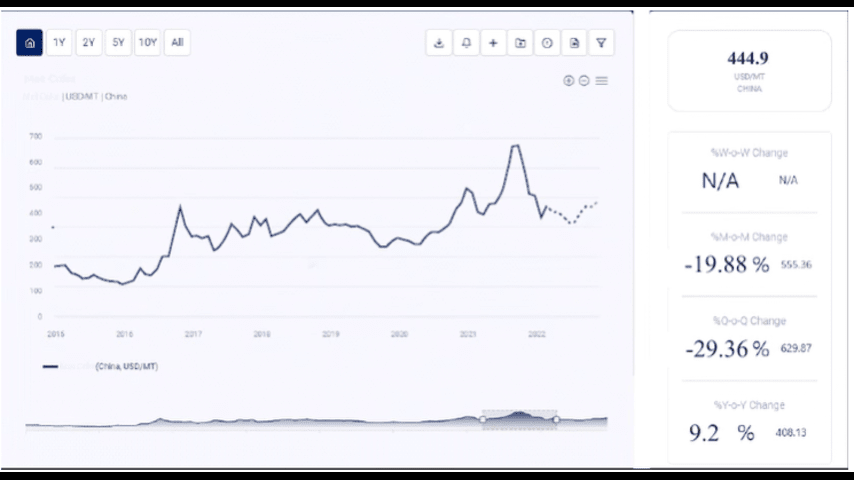Steam is a crucial utility in various industrial processes, including power generation, chemical manufacturing, food processing, and oil refining. Understanding the production cost of steam is essential for industries to optimize their operations, reduce costs, and improve efficiency. This article provides a comprehensive analysis of steam production costs, covering key factors that influence pricing, production methods, and future outlook.
Key Factors Influencing Steam Production Costs
1. Fuel Costs
- Natural Gas: A primary fuel source for steam production, natural gas prices significantly impact steam production costs. Natural gas is favored for its efficiency and lower emissions compared to other fossil fuels.
- Coal: Although declining in use due to environmental concerns, coal is still used in some regions for steam production. Coal prices and availability affect production costs.
- Biomass: Renewable biomass sources can be used for steam production. The cost of biomass varies based on availability and regional factors.
- Electricity: In electric boilers, electricity costs directly influence steam production expenses.
2. Energy Efficiency
- Boiler Efficiency: The efficiency of the boiler used in steam production is a critical factor. High-efficiency boilers consume less fuel, reducing overall costs.
- Heat Recovery Systems: Implementing heat recovery systems can improve energy efficiency by capturing and reusing waste heat, thus lowering fuel consumption.
3. Maintenance and Operation
- Maintenance Costs: Regular maintenance of boilers and associated equipment is necessary to ensure efficient operation and prevent breakdowns. Maintenance costs include labor, parts, and downtime.
- Operational Costs: These include labor costs for operating the boiler, water treatment, and other ancillary services required for steam production.
4. Water Treatment
- Quality of Feedwater: The quality of water used in steam production affects the efficiency and longevity of the boiler. Treating feedwater to remove impurities is essential, and the cost of water treatment chemicals and equipment can be significant.
5. Environmental and Regulatory Costs
- Emissions Control: Compliance with environmental regulations requires investment in emissions control technologies such as scrubbers and filters, which can add to production costs.
- Carbon Pricing: In regions with carbon pricing or emissions trading systems, the cost of carbon emissions must be factored into steam production costs.
Enquire For Regular Prices: https://www.procurementresource.com/production-cost-report-store/steam/request-sample
Production Methods
1. Fire-Tube Boilers
- Overview: Fire-tube boilers are commonly used for low to medium-pressure steam production. They are relatively simple and cost-effective but have lower efficiency compared to water-tube boilers.
- Cost Factors: Fuel costs, maintenance, and operational costs are primary factors influencing the cost of steam production in fire-tube boilers.
2. Water-Tube Boilers
- Overview: Water-tube boilers are used for high-pressure steam production and are more efficient than fire-tube boilers. They are suitable for large-scale industrial applications.
- Cost Factors: Higher initial investment costs, but improved efficiency can lead to lower long-term operating costs. Maintenance and water treatment costs are also significant.
3. Electric Boilers
- Overview: Electric boilers use electricity to generate steam and are suitable for smaller-scale applications where emissions regulations are stringent.
- Cost Factors: Higher electricity costs can make electric boilers more expensive to operate, but they offer advantages in terms of emissions and ease of maintenance.
Future Outlook
Technological Advancements
- Advanced Boiler Designs: Ongoing research and development in boiler technology aim to improve efficiency and reduce emissions. Innovations such as supercritical and ultra-supercritical boilers offer higher efficiency and lower emissions.
- Renewable Energy Integration: Integrating renewable energy sources such as solar thermal or biomass can reduce reliance on fossil fuels and lower steam production costs.
- Smart Controls and Automation: Implementing smart control systems and automation can optimize boiler operation, improve efficiency, and reduce costs.
Sustainability and Environmental Impact
- Emission Reduction: Stricter environmental regulations and a focus on sustainability are driving the adoption of cleaner and more efficient steam production technologies.
- Carbon Neutrality: Companies are increasingly aiming for carbon neutrality, which involves reducing emissions and investing in renewable energy sources for steam production.
Conclusion
The cost of steam production is influenced by a complex interplay of factors, including fuel costs, boiler efficiency, maintenance, water treatment, and environmental regulations. Understanding these factors is crucial for industries aiming to optimize their operations and reduce costs. As technological advancements and sustainability initiatives continue to evolve, the steam production landscape will face new opportunities and challenges. By staying informed and adopting efficient and environmentally friendly practices, industries can better manage the impacts of fluctuating production costs and improve their overall operational efficiency.




